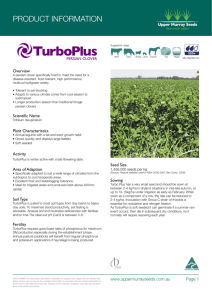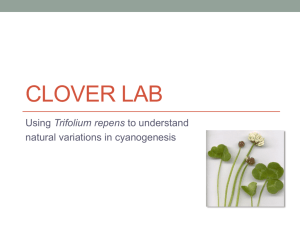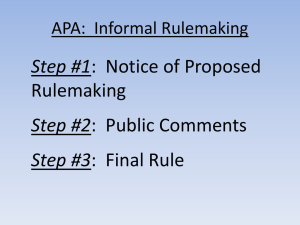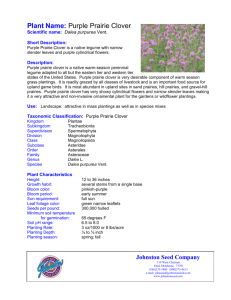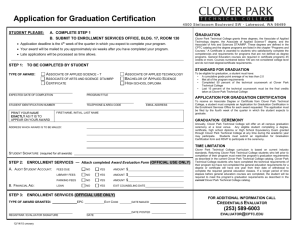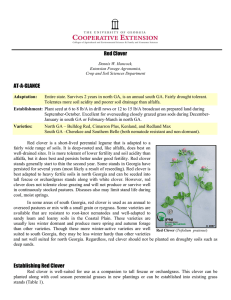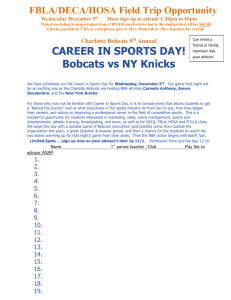Branching in red clover (Trifolium pratense): a morphological
advertisement
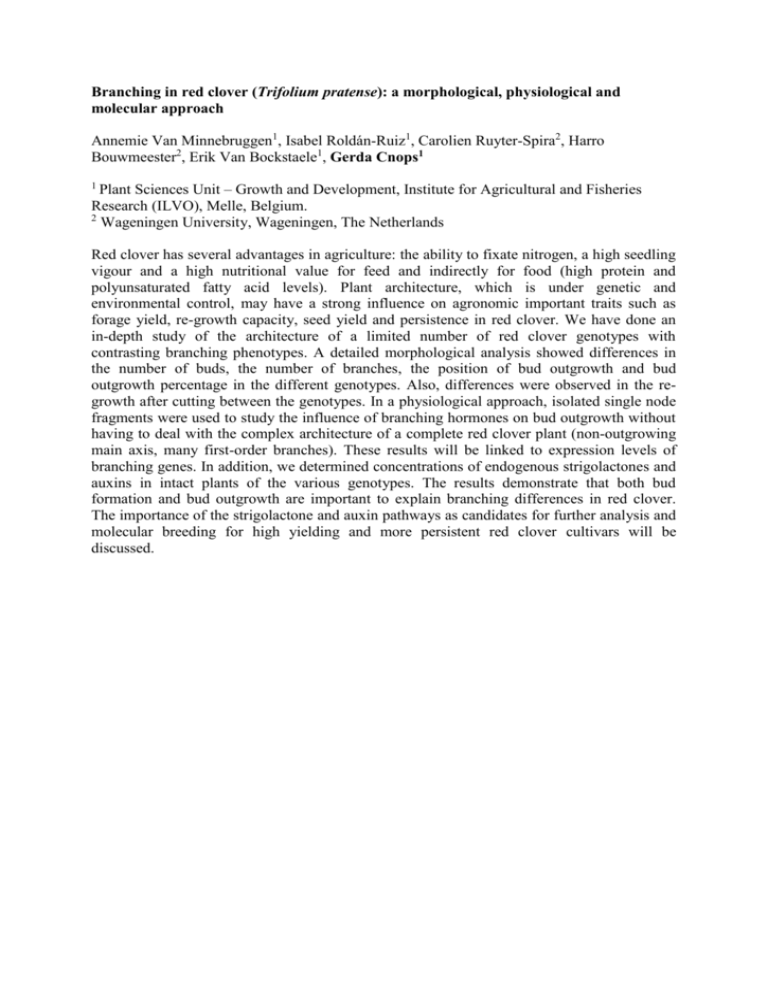
Branching in red clover (Trifolium pratense): a morphological, physiological and molecular approach Annemie Van Minnebruggen1, Isabel Roldán-Ruiz1, Carolien Ruyter-Spira2, Harro Bouwmeester2, Erik Van Bockstaele1, Gerda Cnops1 Plant Sciences Unit – Growth and Development, Institute for Agricultural and Fisheries Research (ILVO), Melle, Belgium. 2 Wageningen University, Wageningen, The Netherlands 1 Red clover has several advantages in agriculture: the ability to fixate nitrogen, a high seedling vigour and a high nutritional value for feed and indirectly for food (high protein and polyunsaturated fatty acid levels). Plant architecture, which is under genetic and environmental control, may have a strong influence on agronomic important traits such as forage yield, re-growth capacity, seed yield and persistence in red clover. We have done an in-depth study of the architecture of a limited number of red clover genotypes with contrasting branching phenotypes. A detailed morphological analysis showed differences in the number of buds, the number of branches, the position of bud outgrowth and bud outgrowth percentage in the different genotypes. Also, differences were observed in the regrowth after cutting between the genotypes. In a physiological approach, isolated single node fragments were used to study the influence of branching hormones on bud outgrowth without having to deal with the complex architecture of a complete red clover plant (non-outgrowing main axis, many first-order branches). These results will be linked to expression levels of branching genes. In addition, we determined concentrations of endogenous strigolactones and auxins in intact plants of the various genotypes. The results demonstrate that both bud formation and bud outgrowth are important to explain branching differences in red clover. The importance of the strigolactone and auxin pathways as candidates for further analysis and molecular breeding for high yielding and more persistent red clover cultivars will be discussed.


